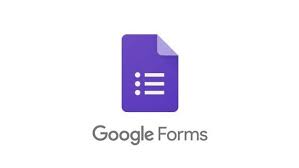The effect of animated folk-tale video on the students’ ability in writing narrative text
DOI:
https://doi.org/10.31597/sl.v6i2.683Keywords:
Animated Folktale Video, writing, narrative textAbstract
Writing is one of the English skills that is considered difficult for senior high school students, especially SMAN 1 Bangkalan. The researcher tried to find out the significant increase between folklore animation videos and the conventional method from pre-test to post-test using independent t-test. In this quasi-experimental research, the researcher tried to find out how far the effect of animated folklore videos on the ability to write narrative texts of class XI students of SMAN 1 Bangkalan. In conducting the research, the writer used a quasi-experimental study by collecting data through pre-test, double treatment, and post-test. The research topic consisted of 148 students for the population and was divided into XI E (16 males and 13 females) and XI B (16 males and 14 females). The data were statistically calculated using an independent t-test to find differences in performance between students taught using animated folklore videos and students taught using conventional methods. Then it was found that the significance level was 0.01 or 1% and the observed t value was higher than the critical t value (3.1 > 2.756), which means H_1 is accepted and H_0 is rejected. In conclusion, the use of Animated Folklore Video in teaching narrative writing is appropriate, and the researcher suggests that this media be applied in real-world classroom teaching.
References
Education: Third Edition. New York: CBS college publishing.
Harmer, J. 2007. How to Teach Writing. Malaysia: Pearson Education Limited
Brown, HD. 2004. Language Assessment; Principles and Classroom Practices.
New York: Pearson Education, Inc.
Brown, HD. 2007. Teaching by Principles: an Interactive Approach to Language
Pedagogy. New York: Pearson Education Ltd.
Cohen et al. 2005. Research Methods in Education: Fifth Edition. London: Taylor
& Francis e-Library.
Syamsuddin and Damaianti, VS. 2009. Metode Penelitian Pendidikan Bahasa.
Bandung: Remaja Rosdakarya.
Latief, M.A. Tanya Jawab Metode Penelitian Pembelajaran Bahasa. 2010.
Malang:Universitas Negeri Malang (UM) Press.
Yassaei, S. 2012. Using Original Video and Sound Effects to Teach English.
English Teaching Forum. Vol. 50. no. 1. Pp. 12-16.
Downloads
Published
How to Cite
Issue
Section
License
1. Copyright of this journal is possession of Editorial Board and Journal Manager, by the knowledge of author, whilst the moral right of the publication belongs to the author.
2. Legal formal aspect of journal publication accessibility refers to Creative Commons Atribution-ShareAlike (CC BY-SA), implies that this license lets others remix, adapt, and build upon your work even for commercial purposes, as long as they credit you and license their new creations under the identical terms. This license is often compared to “copyleft” free and open source software licenses.
3. Every publications (printed/electronic) are open access for educational purposes, research, and library. Other that the aims mentioned above, editorial board is not responsible for copyright violation















